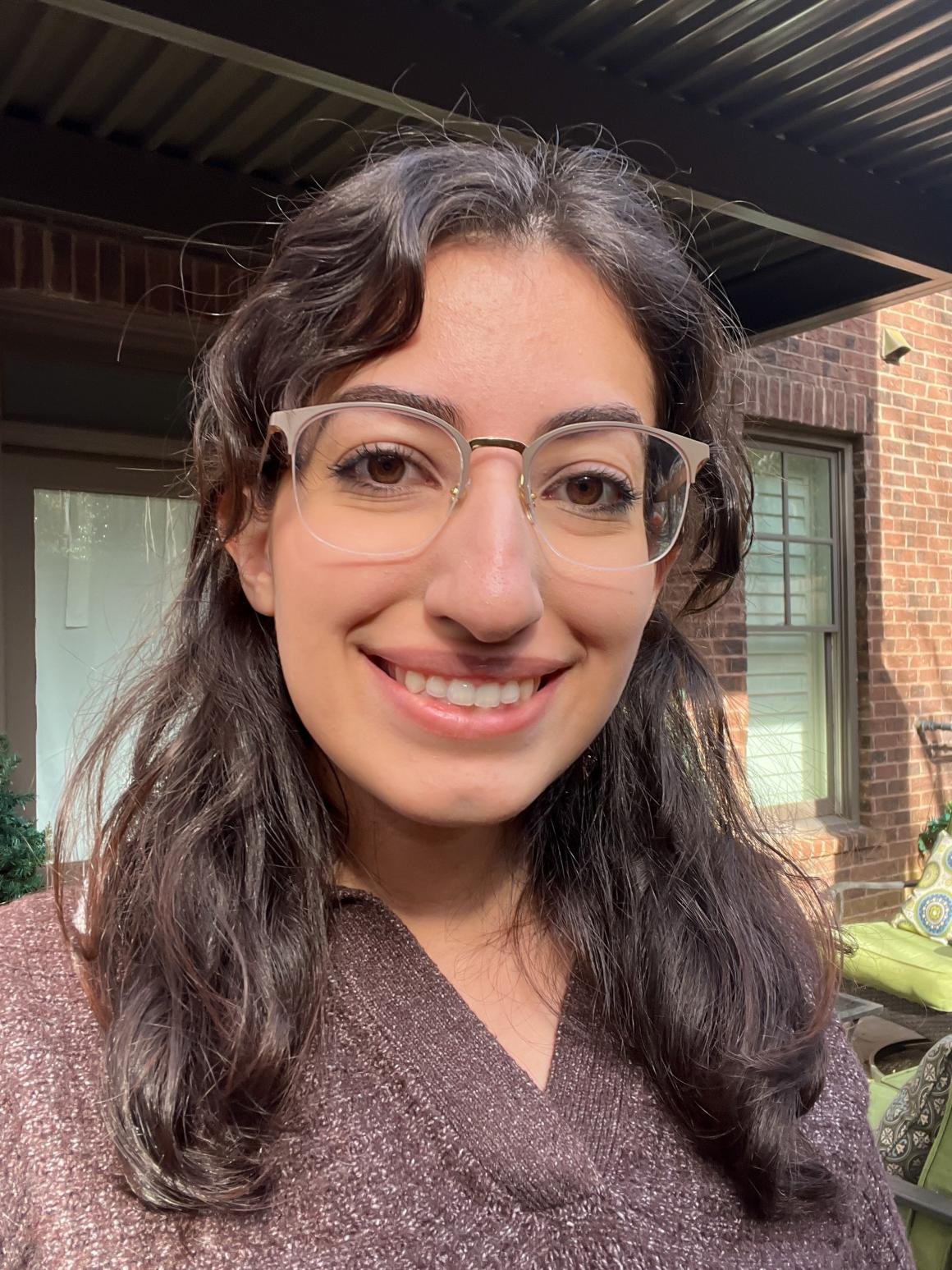Ethnographic Study of the Joe Mack Wilson Student Center
In the Fall of 2022, I took a class called “Ethnography for Designers” where my team and I conducted an applied ethnographic study of the KSU student center. We chose to study a field on campus, due to its location being easily accessible for everyone on our team. After several failed attempts to gain consent from gatekeepers in different fields, we decided to conduct our research in the Joe Mack Wilson student center on the Marietta Campus.
Research Question: “What does hanging out at the Joe Mack Wilson student center mean to you?"
Approach: Applied Ethnography
Duration: 8 Weeks (October - December 2022)
Meet the team
Tyler Eckert
Team Lead, Ethnographer
Nicole Kadom
Ethnographer, Moderator
Natalia Navaroli
Ethnographer, Moderator
Amara Bush
Ethnographer
Joe Mack Wilson Student Center
The Joe Mack Wilson student center is located on Kennesaw State University’s Marietta Campus. The student center hosts various events for students throughout the semester, such as “Stuff-an-Owl,” “Masquerade Dinner,” career fairs, and blood drives. There are four dining options for students located in the student center; Chick-fil-A, Dunkin Donuts, Jamba Juice, and Hissho Sushi. The bookstore, game room, and women’s resource center are also located here as well.
Objectives
Learn the main motivations for students visiting the student center
Learn how the student center affects students’ experience on campus
Learn what students typically do when visiting the student center
Learn student’s attitudes towards the student center
Learn what purpose the student center serves on campus
Observations
After defining our research question, we started observation hours. Each team member spent 10 hours in the field observing and doing jottings in our individual journals. Combined, we have a total of 40 hours of observation in the Student Center. Our jottings consisted of things such as the interactions we saw between students, the overall atmosphere of the student center, and anything we thought was interesting or relevant to record. We conducted observation in various areas of the student center, such as upstairs, downstairs, and near the restaurants. After each observation session, each team member made field notes in their journals. A field note essentially summarizes the key takeaways from that observation session, to make it easier to analyze all of the data later on.
The people we observed in the student center were primarily students and faculty members at KSU. The majority of students in the Student Center were simply picking up food and leaving. Many students also sit by themselves and take advantage of the outlets to charge their laptops and do assignments. While many students did sit with their friends, this did not seem to be the case for the majority. We started to realize at the Student Center functions as more of a utility rather than a community space.
Our team came together and analyzed our data from observation sessions and interviews, and identified these key points:
Food
Students frequently visit the student center to get food. They often visit Chick-fil-A and Dunkin Donuts. Oftentimes, they just grab the food and go, but sometimes they will sit and eat it in the student center.
Study
We learned that many students go to the student center as a place to study and get work done. This is because the student center has working outlets, and tables where students can do homework
Social Gathering
Many students use the student center as a place to meet with their friends and catch up. There are many large tables where students sit with their friends and talk while enjoying food
Interviews
My team interviewed four participants who regularly frequent the student center. I moderated for two of them and facilitated the other two. Our interviews were conducted virtually through Zoom, and a couple of our participants did not consent to have their names or photos shared. After each interview, each team member made a field note in their journal.
What is Ethnography?
Ethnography is a form of qualitative research that consists of mixed methods. These methods include; observation, interviews, and contextual research. The purpose of ethnography is to understand the meaning of a certain culture. Typically, ethnographers can spend months researching in their field, however, this project was completed for my “Ethnography for Designers" class in the fall of 2022. Since this was only a semester-long class, we used applied ethnography, which takes applies the principles of ethnographic research on a much smaller scale.
Interview Participant 1
Our first participant seemed very disappointed in the dining options not only in the student center but also on the entire campus as well. They thought that the Kennesaw campus has a much larger variety of places to get food and wished that the Marietta campus would be similar. They also said that they now eat their food cold, since KSU took away the microwave in the student center. They wished that there were healthier options on campus so that they wouldn’t always have to do this. They used to frequent the student center more often but stopped due to the lack of variety in dining options and not having a microwave accessible. They felt that the student center was more of a utility rather than a meaningful community center. When they do go to the student center now, it is just to meet with friends just because they do not have anywhere else to meet up.
Interview Participant 2
Our second interview participants expressed that they enjoy going to the student center for the tables and outlets. They sometimes go to meet with friends or get food from Dunkin Donuts, but the primary reason they visit is generally for the tables and outlets. They said that they wish that the student center was more centrally located because that would make them more likely to visit. Typically, they just go to the areas that are near their next classes, which leads them to not visit the student center too often. Typically, they dine at Stacks instead of the student center, because they prefer its central location on campus. Occasionally, they will attend an event held in the student center, but they generally do not visit much since it is just too crowded.
Interview Participant 3
Our third interview participant viewed the student center as a place to sleep or kill time. Even though they have dining dollars and a meal plan, they do not visit the student center regularly because of its lack of variety of dining options. They also said that the Chick Fil A in the student center takes way too long every time, which causes them to go off campus for food. They told us that they now stay in the Atrium between their classes because they prefer the food options there and they don’t have to wait as long. Otherwise, they usually go get food off campus at a nearby restaurant. They generally do not meet with friends in the student center, but they have gone for a blood drive before.
Interview Participant 4
Our fourth participant lives on Kennesaw campus and has a meal plan. Though they live on Kennesaw campus, most of their classes take place on the Marietta campus. They felt that the student center would be way more popular if it was centrally located, and they usually just go to get Chick Fil A and leave. Sometimes, they go to study at the student center, they said that this is because it is the only place on campus with tables and working outlets.
Analysis
For this ethnographic study, our team investigated students’ social engagement in Kennesaw State University’s Student Center. Our study was conducted by onsite observation, one-on-one interviews, and team analysis. Our assumptions leading into the study, as well as our initial research question, focused on the social relationships and community building associated with communal dining. However, with new data being introduced over the course of the study, our team began shifting our research in a new direction. Our revised research question then became focused on the meaning of the space to students. We were able to measure this based on varying responses from individual interviews. For instance, the individual’s specific utilization of the space. We found certain individuals often entered the space solely for dining or individual work. These participants often reported being alone or without social interaction. However, other individuals viewed the space as an optimal location for social gatherings among their friends and peers. This is due to the space offering tables seating upwards of six while the space comes with no nuanced pressure for students to speak quietly or not speak at all. Characteristics of these individuals were also congruent with being more aware of or involved in other social functions held in the space, often offered by the school. This dichotomy was also evidenced during observation. There were often many students focused on individual tasks, while many others were there in groups and meetups. Thus, the meaning of the space, as it is a multifunctional facility, is often subjective to the student. Below are our observation and interview matrices:
Reporting
We came together and created a research report of our findings. View our finalized report here:
Conclusion
To summarize the project, we generally followed the guidelines in Sam Ladner’s book, “Practical Ethnography: A Guide to Doing Ethnography in the Private Sector,” to complete ethnographic research on the Joe Mack Student Center located on the Marietta Campus of Kennesaw State University. Through this, we were able to answer our research question, “What does spending time at the Joe Mack Student Center mean to you?” To our understanding, the Student Center functions more as a utility, rather than a space that has special meaning to students. Though there are students who do meet up and go to events, the space mainly functions as a place to grab food or to sit down and plug in your laptop. The student center is like a library, but with fast food. The societal aspect of food in the American culture wasn’t necessarily applied to this field. While it doesn’t fit our prior assumptions of the field, it isn’t entirely surprising knowing the general culture of students on the campus. It is interesting to see how our prior judgments without spending a lot of time in the field prior were proven wrong. It is another example of not judging a book by its cover. The curiosity now remains of how many other areas in the world we judge from face value could be entirely different once you are completely immersed in that culture. There is only one way for this to be discovered. Step out of your comfort zone and dive in headfirst.








